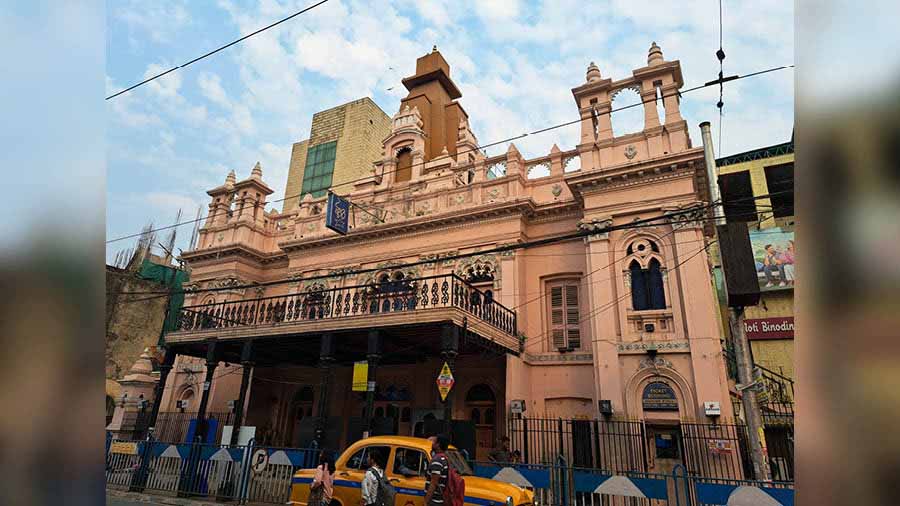If the foundation of Hindu College in 1817 and the publication of the first Bengali newspaper Samachar Darpan in 1818 were the two biggest milestones of Bengal renaissance of the 19th century, then there are a few more significant historical events that confirmed Bengal as a hub of India’s creative mind in India under the colonial rule.
One such event took place on December 7, 1872, when the first Bengali public theatre started in Calcutta at 165 Upper Chitpur Road, in the name of National Theatre. The very next year, two more public theatres came up at 6 Beadon Street and 9 Beadon Street. These were called the Great National Theatre and Bengal Theatre, respectively. All these changed the spectrum of public entertainment within a few years and thus Calcutta saw the opening of many new public playhouses meant for Bengali theatre performances.
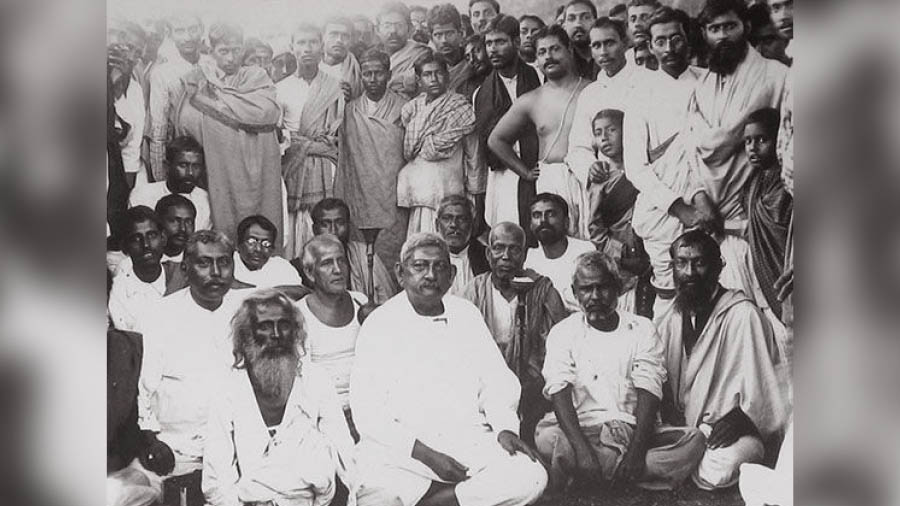
Girish Chandra Ghosh (centre) flanked by his disciples
One such playhouse was Star Theatre. The original Star Theatre that opened in 1873 on Beadon Street does not exist anymore. It was razed when Central Avenue was constructed in the mid-1920s.
The Star Theatre that we see today on Bidhan Sarani started in 1888.
The wave of Bengali theatre that started in 1872 was described by newspapers as “an event of national importance”. And thus emerged a man named Girish Chandra Ghosh, whose playwriting, direction, acting and mentoring of budding talents influenced a generation. He created a strong group of theatre workers that included Binodini Dasi, Amritalal Mitra, Aghornath Pathak, Kadambini and Upendranath Mitra, to name a few.
Together they formed a theatre group, Calcutta Star Company, in 1883, and started performing at Bengal Theatre.
Soon, they got a young Marwari investor named Babu Goormookh Roy, who negotiated with Binodini to be his exclusive consort and invested Rs 50,000 in establishing a new playhouse. A plot owned by Kirti Chandra Mitra at 68, Beadon Street, was leased and Star Theatre was built in 1883.
Initially, it was decided that the theatre would be named after Binodini herself, but considering Binodini’s social status as a girl from a red-light area the name was changed to Star. A heartbroken Binodini was told that the name Star actually represents her star status in the world of Bengali theatre.
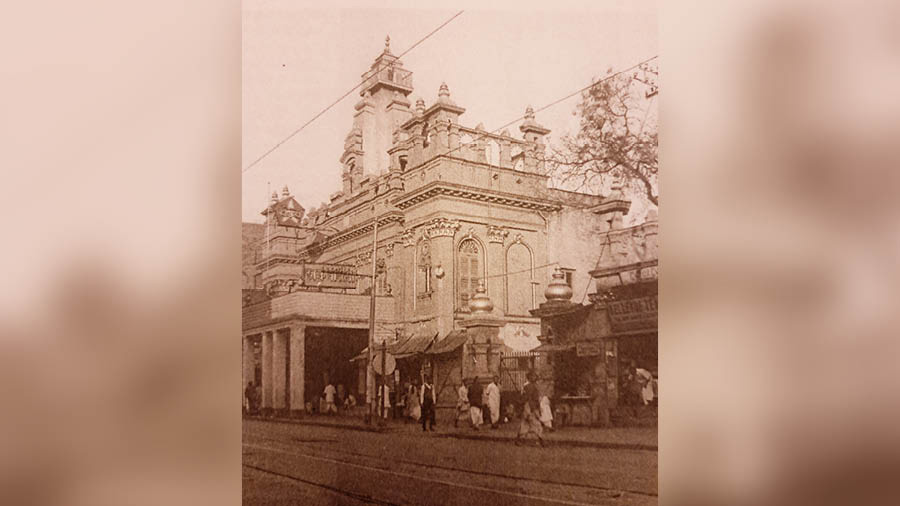
A file picture of Star Theatre ABP Archive
On July 21, 1883, Bengali theatre stepped into a new era when Star theatre opened with the Girish Ghosh-directed play Daksha Yajna. An advertisement published on that day in The Statesman read: “The largest airy and comfortable theatre – Mechanical and magical wonders – Price of admission from Rs 8 to Rs 14”.
Star, as a new playhouse, was a smash hit from Day One, thanks to the Girish-Binodini partnership on stage.
Though Goormookh Roy left business in next six months, the victory lap of Star under the new ownership of Amritalal Mitra and Amritalal Bose went on with innumerable smash hits like Madhusudan Dutta’s Meghnadh Baoh Kabya and Chaitanya Leela, a play that even watched by Ramakrishna Paramahansa watched. Ramakrishna was so moved by the performance of the team that he went to the green room after the show to bless all. It was a huge boost for Bengali theatre, which was till then considered a world of fallen people.
Binodini, the biggest attraction of the group, left Star soon after this and its popularity started declining with her departure.
The last performance at Star Theatre was on July 31, 1887. The plays were Budhacharit and Bellik Bazar, both written by Girish Ghosh.
Soon, a new owner named Gopal Lal Seal purchased the Star Theatre building, but he could not buy the brand name, Star. He renamed it Emerald Theatre. It was later renamed many times, like City Theatre in 1896, Classic Theatre in 1907, but it never regained the status of Star.
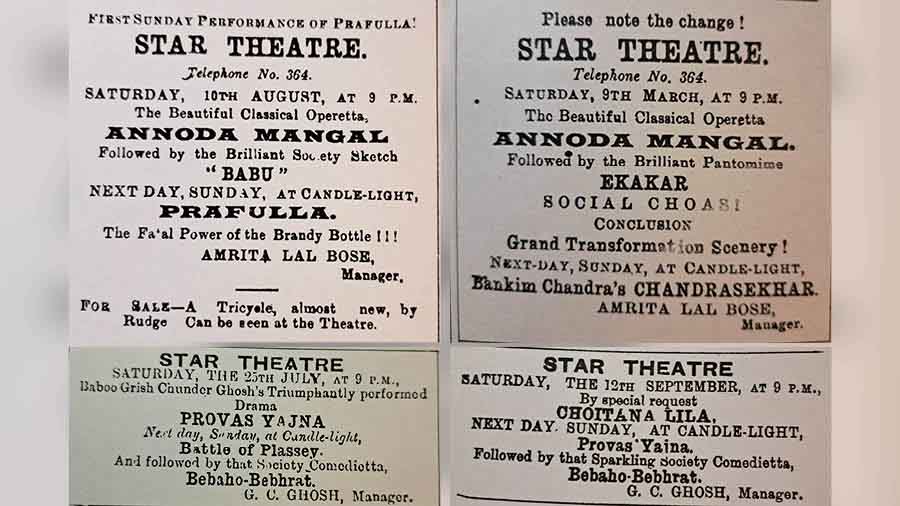
The ads published in 'The Statesman' The Statesman Archive
However, the pioneer of Indian motion picture Hiralal Sen conducted many of his early cinema shows at Classic Theatre, when it was under his friend Amarendranath Dutta.
It is important to note that the history of Star Theatre is actually the history of two different playhouses situated at two different locations in two different timelines, though both had the luck of carrying a common name Star. The story of the new Star unfolded in 1888.
The old group of Star did not sell the name to the new owner and bought land on Cornwallis Street. There, they built a new playhouse and named it Star Theatre.
This new modern Star Theatre started its journey on May 25, 1888, with a play, Nashiram, in which Tarasundari, who later became a famous actress, made her debut.
The new Star was designed by Jogendranath Mitra and Dharmadas Sur and its illumination was done by PC Mitra & Company.
It was an unlimited entertainment extravaganza of that era and a report published in The Statesman on June 6, 1888, gives its evidence.
The report says that the auditorium, though meant for ‘natives’ is “worth the inspection of European visitors”. The cost of building the auditorium was pitted at over Rs 1.5 lakh and while it had a capacity for an audience of 1,500 people. It mentions its adequate safety features and also describes the entrances as “handsome and effectively illuminated with minute gas – jets suggestive of incandescent electric lighting”.

The decorated doorway of the theatre Somen Sengupta
The staircase and base of the theatre were decorated with plants and soft carpets. Apart from secure sites, it mentions the dress circle, royal box decorated in Parisian style and also a zenana tier with a private staircase on the second floor. The Statesman report was all praise for an ultra-modern theatre in Kolkata that even had a “lounging room for European visitors, where they may find mental refreshment of another kind”. The lounge had a small library and its walls were decorated with photographs of Ellen Terry, Minne Palmer, Connie Gilchrist etc. Also to note that the “entrance hall displayed bronze medallions of Shakespeare, Byron and Michelangelo”. It also speaks of a “fine gas chandelier, the decorated ceiling and dress circle, and the footlights”.
There was special provision for tram cars to transport spectators after the show from Grey Street to Bowbazar crossing – an unimaginable arrangement in that era.
Though initially night shows were illuminated with gaslight, Star introduced electricity in its auditorium on April 28, 1889, in a new play, Adarsha Bandhu. It was a time when electricity was not available to common Calcuttans. However, the old Star that was renamed Emerald, introduced electricity in October 1887.
Star Theatre also became a part of India’s freedom struggle. In October 1905, the day Lord Curzon implemented the Bengal partition, it suspended its shows as a token of protest. Earlier also, Star played host to Surendranath Banerjee and Annie Besant on its stage for different purposes.
After a bad patch during the First World War from 1914 to 1918, Star saw its good days under legendary Sisir Kumar Bhadhuri, when he started performing here till 1937. In 1925, he staged Tagore’s Chirakumar Sabha in Star and Tagore himself came to watch it as a spectator. Before that it ran many smash hits like Prafulla, Ananda Mangal, Battle of Plassey etc. In 1923, immediately after the World War I, when Star was taken over by the new management of The Art Theatre Limited, two smash hit productions were launched. One was Iraner Rani and the other was Karnarjun. In Iraner Rani, the sensational dancing star Niharbala gave an amazing performance.
In competition with cinema, theatres of Calcutta faced a huge challenge from early 1940s and it was followed by non-stop ravage of war, famine, fratricidal riot and partition of the country in 1947. Many theatre houses, except a few like Star, Minerva, Rangmahal etc, somehow managed to survive. It was the time when plays with moderate success like Maharaja Nanda Kumar, Shankuntala, Prithwiraj etc were performed at Star.

Amritlal Basu
In 1953, Star, under Salil Kumar Mitra, was closed for six months.
It was given a new look with an air-conditioning system and a new play named Shyamali, based on Nirupama Devi’s novel. The play was launched on October 15, 1953.
The stage design and light was done by the US returned Satu Sen, who later held the principal post of National School of Drama.
The star cast of Shyamali included Uttam Kumar, Sabitri Chatterjee, Bhanu Banerjee, Jahar Ganguly, Anup Kumar, Sarayu Devi etc. It became such a smash hit that theatre lovers from all over India came to watch it and that included Ashok Kumar, Raj Kapoor, Sashadhar Mukherjee, V Balsara etc. It was even watched by some foreign actors. It ran for a total 552 shows from October 15, 1953 to February 15, 1959. Out of these, Uttam Kumar acted in 484 shows. After he left, his role was played by one Nabakumar who did 68 shows.
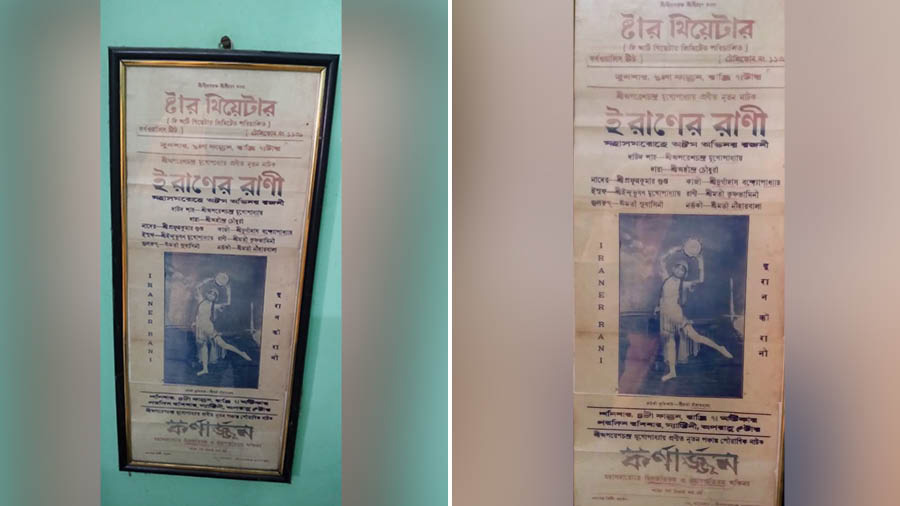
A near hundred years old poster of Star - A collection from Bimal Chattopadhyay Chandranath Chattopadhyay
For the next 25 years, Star was the star attraction of Calcutta’s commercial theatre and it again created history when in early the 1980s, a play named Samadhan starring a young Prasenjit Chatterjee played for many nights. It is on the stage of Star that he was noticed by a filmmaker, who gave him his first break as hero in a film Duti Pata and as they say, the rest was history.
Star was gutted in October 1991 and closed for a few years. Later, the government of West Bengal rebuilt, retaining its heritage look. The Star, in its new avatar, was opened in 2005 and it now houses a cinema, a theatre stage, an open air ampitheatre, a lounge, café, an exhibition hall etc. It is a complete entertainment zone now.
Star is perhaps the only stage of Kolkata that has witnessed the birth of stars like Binodini Dasi, Uttam Kumar and Prosenjit – three iconic actors from three different eras – creating a milestone in Bengal’s theatre journey. No wonder, its heritage value is priceless.
